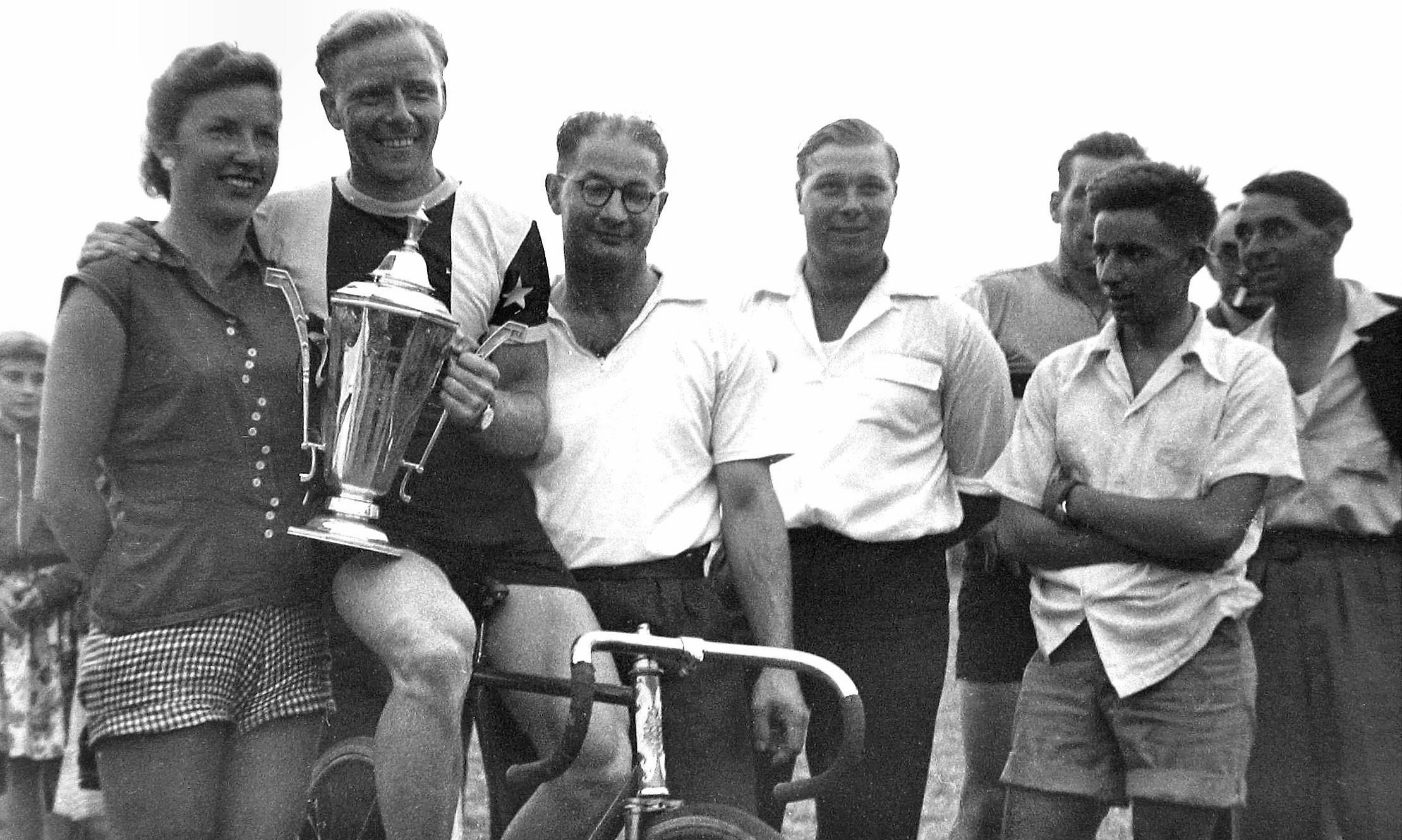Random Recollections of Cycling in Egypt 1950 - 1951
Posted: Friday 21st August 2020
Peter (Underwood) suggested to me that I should write about my cycling experiences whilst serving with the RAF on the Canal Zone in 1950 -51 during the period of my National Service. It’s a long-long time ago and most of my relevant diaries and records are long gone. Unlike John Basell, who has also written of his similar experiences, I for the most part did not keep in touch with my colleagues of the time and there were no reunions. I think most of us preferred to put it behind us and get on with life and some real bike racing. My recollections are therefore spasmodic and consist of a series of impressions which have remained with me. I cannot vouch for the precise accuracy of my facts or the sequence of events.
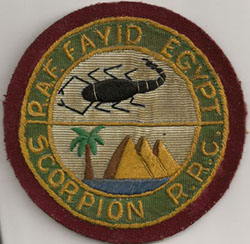
Random Recollections of Cycling in Egypt, 1950-1951
I never expected to be serving my RAF National Service in the Middle East, least of all on the Canal Zone. Any other Middle East posting would have been better, indeed, Cyprus would have been idyllic, – particularly from the point of view of cycling. I’d hoped/expected to be continuing my cycling in the UK until an emergency overseas posting kicked that into touch.
The Canal Zone was essentially a series of service camps and airfields intermittently spread along the western bank of the Suez Canal from Port Said in the North to Suez in the South with Ismailia in between. Essentially there were just two roads; the Canal Road, which obviously followed the bank of the waterway and, further inland, the Treaty Road which ran more or less parallel with the Canal Road for most of its length essentially linking the various military establishments. Both were pan flat, the Canal Road – smooth, the Treaty Road – bumpy.
I was posted to RAF Fayid, the main air base and staging post in the Middle East. It was situated mid-way along the canal about a mile from the Great Bitter Lake. My first contact with the camp cycling club, the Scorpion RRC, was not encouraging. There appeared to be just one unenthusiastic member who was shortly due to return to Blighty and demob. On my first visit to the clubhouse I was confronted with what appeared a load of junk. Cycling junk, – but still junk; rusty, bent and worn, it seemed easy to see why the club wasn’t prospering. I subsequently arranged a meeting with the Officer i/c cycling. Although pleasant and eager to help he had no interest in cycling but, like every other officer, had been allocated a sport/pastime. He promised to do what he could and suggested a full inventory of equipment. However, he pointed out that with so few cyclists, prospects were not encouraging. With this in mind I put up posters on the camp notice boards and arranged announcements on the camp radio inviting all interested to attend a meeting. About 8-10 turned up, mostly novices, of whom about 4-5 survived assembling themselves a bike and the early club runs.
Initially I spent much of my spare time at the clubhouse sorting what might be useable from the rest which was only fit for the scrap bin. It was a fascinating exercise. There was some genuine racing tackle, invariably ancient and outdated, well worn, damaged and for the most part useless. I remember two British lightweight framesets the best of which had been ruined with a failed amateur attempt at a repair and a pair of warped wooden sprints. The only truly ‘serviceable’ bikes were three Raleigh Sports in varying stages of assembly (26” wheels, single speed) to which none of the better tackle could be attached. A big problem was the incompatibility of the various components; – Metric, Imperial and Raleigh’s own standard. There was the subsequent addition of another two Raleigh Sports bikes which after ‘rescue’ as someone’s camp transport were returned to their true home. If I wanted to ride a bike it was back to square one. Worse in fact; – at least my very first mount, a 3-speed Sun Sports fitted me, whereas the biggest Raleigh was 2” smaller than my current home based P.T.Stallard with a ridiculously short reach. And to think that for over a year I had refused to join a cycling club until I had a ‘proper’ bike!
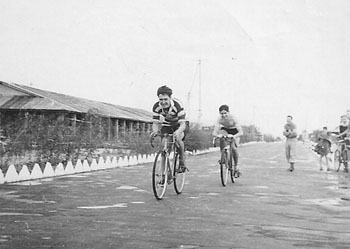
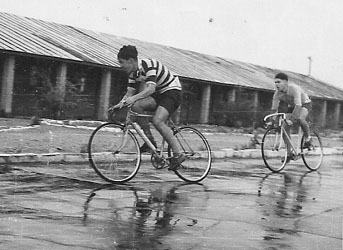
There was an unexpected bonus. It had nothing to do with cycling, but with my great passion for music. Behind all of the bike tackle there were some old boxes which turned out to contain gramophone records. Nearly all were old 78s, mostly of the ‘Housewives Choice’ variety with a sprinkling of popular classics and lots of Victor Sylvester. But also (for me) some jewels; early Charlie Parker and Woody Herman on American labels and the first Big Bill Broonzy I’d ever heard. There were also a number of large LP style studio discs containing US radio programmes including their Armed Forces ‘Command Performance USA’ and ‘Mail Call’(?) shows. It was some years before the introduction of commercial LPs and we tried to assemble a suitable turn table but it was never totally successful. As I recall, we passed all (most) of the records on to Fayid Station radio.
As John Basell states in his account, – ‘it wasn’t all rosy out there’. Basically life in the Canal Zone was horrible. It was virtually impossible to escape the all encompassing service influence with several hundreds of thousand servicemen (virtually no women) concentrated in a relatively small region with no diversions or entertainment other than provided by ME Command. In addition there was the terrible climate. Life was mostly extremely boring, could easily become oppressive and ultimately very depressing. Aware of this, the ‘powers’ tried to provide diversions and to cater for all sports and pastimes. Hence the allocation of these responsibilities to commissioned officers. In my own case I thank the Lord for cycling; – even though it was the most unholy environment in which to practice our sport! For three-quarter of the year it was intensely hot. Sand storms were not unusual.
At sometime or other we all suffered from ‘gyppo gut’ (or ‘Delhi-belly’), dhobi-itch, flies galore, bed bugs and other horrors. Choice of roads and route were very limited. Packs of rabid dogs were always a potential hazard; – but at least did help you develop a sprint! (Early on I was presented with a length of wire rope to beat them off, which slotted up the handlebars!). An unusual proportion of our riders were novices looking for some form of interest and exercise. On the other hand, not all regular cyclists choose to ride in Egypt considering that it was too far removed from the real thing. I knew one such rider on our camp who was the member of another Sheffield club. He had been in Egypt for over a year when I met up with him and I found him strangely subdued. Within a few weeks he had committed suicide. (He employed the usual method whilst on the compulsory guard duty). It was not entirely unusual on the Canal Zone. There were another two cases on our camp whilst I was there.
As always, the first and obvious advantage of riding a bike, even in these conditions, was freedom and mobility. At least we could get off the camp and out on the road. Favourite runs were to Ismailia, the Malcolm Club at Deversior, which was situated on the shore at the extreme northern end of the Great Bitter Lake, and regular visits to other clubs on the various camps throughout the Zone. I also recall our longest ever club run to Suez and back. When it came to competition the clubs organised a series of events with, on average, a race every 3-4 weeks. As easiest to organise they were mostly time trials; naturally for we Brits over regular 5, 10, 25 and occasionally 50 mile courses. Most of the bigger clubs (but including ours) organised at least one road race every year, almost invariably round the camp roads and if appropriate (like us), around the airfield peri track. Usual distance was 40–60 miles
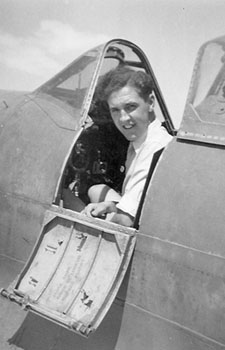
There were huge variations in the standard of competition. For starters riders ranged from complete novices all the way through to international standard. (Towards the end of my time Ted Penvose joined us. On his demob he was signed up by Viking Cycles). There were also immense differences in the equipment competitors used varying from modern multi geared road race machines all the way to the old bog standard single-speed sports bikes which our club rode for most of my time there. Much depended on the whims, fancies and policy of the camp (or the man in charge), funds available and where a club was based. This of course could also determine any time off or ‘excused duties’ for both training and racing.
In my time in Egypt most regarded the overall best club as the Exiles CC, RAF Kasfareet. Also much was determined by the importance and demands of your specific trade or occupation. I myself worked shifts of 8 hours ‘On’, 24 hours ‘Off’ as the Instrument basher in a ground crew of eight that carried out the routine service (+ any repairs) required on all of the many aircraft that passed through RAF Fayid. I suppose I must have worked on every type of aircraft in service with the RAF at that time and many others; it was a most interesting and responsible job. However, although I had ample time to ride my bike, the rigid shift system and the programme of races were often incompatible and I missed many events. In this respect my own performances varied considerably and although I achieved some creditable results it became difficult to take competition seriously. Inferior tackle did not help.
A race I do recall and which left a lasting impression was the Port Said – Ismailia Team Time Trial. I don’t remember the details of how it came about, but contact had been made with the Egyptian Cycling Federation and service teams took part alongside both Egyptian clubs and teams representing the French, Italian and Greek communities which were highly prevalent in Egypt in those days. We were certainly impressed with the professional style turnout of most of these teams, complete with team cars etc. and all appeared equipped with the best and latest racing tackle. Although down the list I remember being delighted with our performance. We even beat a few of the ‘locals’.
Another big event for me was the Nicosia Grand Prix in Cyprus. Although the best ‘holiday’ the RAF ever provided, the cycling aspects turned out a bit of a disaster. After some persuasion, our Cycling Officer had arranged air transport and a full week detachment for us in Cyprus to prepare and acclimatise for the big race! The ‘disaster’ element had its beginnings some time earlier. For quite a period I had been trying to create a decent race bike based on the serviceable lightweight frameset I had found in the clubhouse. With much fettling, ingenuity, innovation, begging and borrowing I was slowly creating a creditable machine complete with gears and importantly, which could give me a decent position. With the Cyprus trip pending, work speeded up (a multi geared bike was essential) and I completed assembly only a few days before our departure.
Apart from getting my position correct I didn’t have the opportunity for a proper try out. This would have to be left to the roads of Cyprus. First impressions were of a very lively frame (or should it be skittish?) which ultimately became a disaster when, in the Kyrenian Mountains, I attempted my first proper descent in over two years (at home I’d always prided myself on my descending prowess over the High Peak cols!). This magnificent mount of mine would not go round corners! No matter what, on sharp bends at anything over 10mph, I just ran out of road! Proper attention, which I should have paid much earlier, revealed a head angle far too steep for the 3” rake of the only fork available. In my defence, please bear in mind, that at the time I was a 19 year old novice in these matters. Thanks to the local lads I was able to borrow a bike for the race.
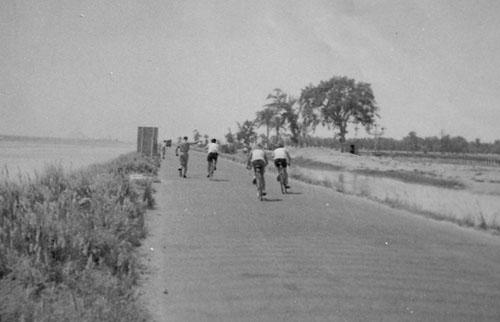
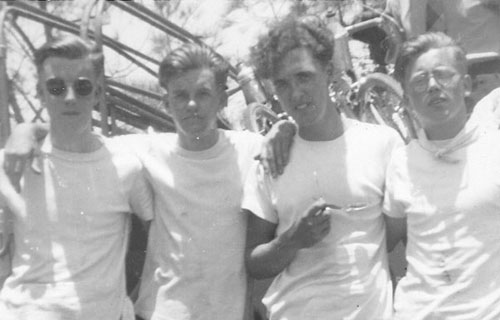
Subsequently, a careful examination of the frame’s dimensions revealed a ridiculously steep head angle, an overlong top tube and a too-high bracket. This on a road frame designed to take derailleur gears! It clearly appeared to have been the ‘custom built’ product emerging as a result of someone’s ‘personal specification’. Whatever the weird shape of the original owner, who no doubt paid over the odds for it, there is no way a bike based on this frameset could perform adequately in a road race. The fact that the builder was a well known London lightweight specialist (who will remain nameless) is pretty appalling. Ever since then I’ve been suspicious of ‘custom built to your own specification’ and the potential perils. I firmly believe that the vast majority of we (fairly) normal beings can easily fit ourselves onto a frameset with a geometry designed primarily for ultimate performance, comfort, etc. This certainly became the case when longer stem lengths and adjustable seat pins (fore & aft) became available.
Returning to my reminiscences; – At the beginning of my conscription National Service had been for a period of 18 months, so on arriving in Egypt following square bashing and a full technical training course, a relatively short stay was expected. I therefore discounted any idea of shipping out my Stallard, accepting the status quo and ‘generosity’ of the RAF and PSI funds. It was some months later after my dislike of Egypt had become well established, but at least tempered by the knowledge that the end was in sight, that National Service was increased to two years and my stint on the Canal Zone extended by six months! This stimulated my efforts to obtain better quality bicycles and equipment, but it was some months later that we, together with two(?) other clubs made contact with a leading race dealer/importer in Cairo. We arranged to purchase a batch of Legnano genuine lightweight race bikes, fully equipped with sprints & tubs, Simplex gears, etc. Exiles CC (of course) were first to receive theirs and I recall them visiting our clubroom shortly after so we could all drool. Needless to say, delivery of ours was delayed and, alas, I was due to sail home within a week of when they finally arrived.
Note: I read Ken Lowson’s short account about his time with the Exiles CC with interest. It overlapped with my own period in Egypt. His remarks regarding the acquisition of Legnano bikes and the Port Said – Ismailia TTT certainly coincide. The picture of the Exiles’ clubhouse revives memories and in the Deversior photo some faces are vaguely familiar, including Ken’s. I can definitely remember the chap in the suit holding the Legnano bike and also the rider to his right. The names Evans and B A Reader come to mind (?). .
The Buckshee Wheelers
From time to time various statements have appeared on eligibility for membership of the Fraternity of the Buckshee Wheelers and I know that now, with all of us that much older, the situation has changed. Johnnie Walker, the founder and main instigator, was a good friend of mine, a member of the Sheffield Phoenix and a fellow BLRC enthusiast. Knowing of my own service time in Egypt he took me to Buckshee Wheelers reunions which were very enjoyable, but he always made it clear that as far as he was concerned, their membership was restricted to those cyclists who served in Egypt during WW2. I can’t say I felt strongly about it and I must confess that, at the time, I was more concerned with the affairs of the BLRC than the F of B W. Irony is that during WW2 many (most?) Buckshee Wheelers were many miles from the front line and never heard a shot fired in anger. Unlike some of the bods who were out there after my time (which was relatively quiet) when things on the Canal Zone became quite hairy.
Changing Allegiances
It was whilst serving in Egypt that my whole concept of cycle racing changed and writing this account got me thinking seriously, for the first time after all these years, why/how this came about. From 1947 until conscription I had been a proud member of the Rutland CC, one of Sheffield’s oldest and most respected clubs. I’d made many good friends, with some of whom I regularly corresponded, and from whom I’d learnt all the ropes; – that unique tradition that applies to UK clubs and cycle sport. So what happened to such a degree that I never even considered returning to the Rutland but instead joined Sheffield Racing CC, the region’s leading BLRC club, where I knew no one? Although I experienced my first ‘en ligne’ road races in Egypt the standard and quality of competition and events was hardly of a standard to influence any major decision or change of heart. Indeed, the race I most remember in Egypt was the Port Said to Ismailia Team TIME TRIAL!
Then I recall that it was in my early days at RAF Fayid that I saw my first ‘Mirroir Sprint’ and ‘But et Club’ magazines. Inspirational! – For the first time I became aware of what an epic, glamorous, popular sport ‘real’ bike racing was; – completely removed from the sport I had experienced in the UK. I subsequently obtained an irregular supply of these magazines from the Fayid Village shop (or was it Ismailia?), my French improved and I was regularly thrilled with the fabulous pictures, the gripping text, the marvellous Pellos cartoons and reports on all the classic races, most of which I had previously never even heard of! By complete contrast, ‘Cycling’ (forerunner of ‘Cycling Weekly’), which was regularly posted out to me, never even gave these races a mention. There was a huge popular sport of cycle racing taking place across the Continent which the UK press choose to ignore! But, true to the BLRC belief in the power of publicity, I was hooked. I’m sure that this was a major factor which influenced all of my subsequent involvement in the sport of cycle racing.
Posted: Friday 21st August 2020
This article appears in the following categories.
Upcoming Events
Whether you are looking for a gentle social meet up, or a 100-mile ride browse the community’s upcoming events and plan your next weekend outing.
